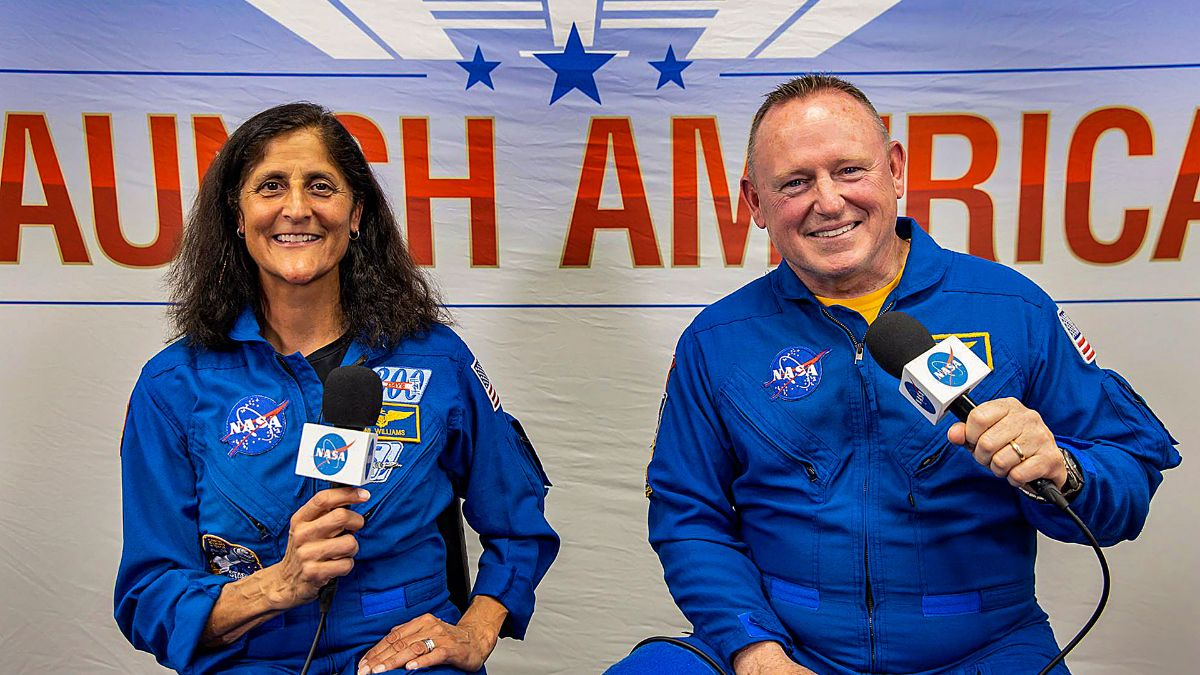Sunita Williams’ return from space just keeps getting delayed.
Nasa has announced that Williams and Butch Wilmore will now stay on the International Space Station (ISS) at least till March 2025.
Williams and Wilmore went to the ISS in June aboard the Boeing Starliner in what was to be an eight-day mission.
They have now spent over six months in space.
But what happened? Why is Williams’ return from space delayed yet again?
Let’s take a closer look:
A brief look at why Williams is stuck in space
First, let’s take a brief look at why Williams and Willmore are stuck in space.
Williams, 58, and Wilmore, 61, got to the ISS on the Boeing Starliner spacecraft to the ISS.
This first of its kind mission departed on June 5.
It was the craft’s first manned test flight.
It sought to assess the performance of the Starliner.
The craft was meant to depart for home on 26 June.
However, the Boeing Starliner had several glitches before reaching the ISS.
This included leaks in the propulsion system and some of its thrusters shutting down.
Still, it made it to the ISS safely.
Despite Nasa and Boeing attempting to work out the problems with the Starliner, they could not trust it to bring Williams and Wilmore back safely.
The Starlighter thus departed for Earth without its crew in September.
Why the delay?
According to Indian Express, Nasa then turned to SpaceX to bring Williams and Wilmore home via its Crew-9 Dragon capsule.
The SpaceX Dragon craft, which currently undergoing testing, had been scheduled to go to the ISS in February.
However, Nasa announced on Tuesday that Crew-10, which is set to relieve Crew-9, is now delayed.
The Crew-10 will now only launch in late March 2025
A fresh crew needs to launch before Wilmore and Williams can return and the next mission has been bumped more than a month, the space agency explained.
According to Nasa, this could even stretch out to April.
“The change gives Nasa and SpaceX teams time to complete processing on a new Dragon spacecraft for the mission,” Nasa wrote on its website.
“Fabrication, assembly, testing, and final integration of a new spacecraft is a painstaking endeavour that requires great attention to detail,” Nasa’s Commercial Crew Programme Manager Steve Stich was quoted as saying.
NASA said it considered using a different SpaceX capsule to fly up the replacement crew in order to keep the flights on schedule. But it decided the best option was to wait for the new capsule to transport the next crew.
NASA prefers to have overlapping crews at the space station for a smoother transition, according to officials.
Most space station missions last six months, with a few reaching a full year.
The development comes even as there have been concerns about Williams’ health.
According to NDTV, an extended stay in space’s environment can be devastating for humans.
This is because the human body tends to lose bone density in space.
The zero-gravity environment also affects the functioning of the heart, liver, and eyes.
Williams is a veteran of space – having clocked up over 517 days during her three missions.
She also had racked up 51 hours of extra-vehicular activity (EVA) – a record for spacewalks.
However, Nasa brushed aside any concerns about the astronauts’ health.
“All Nasa astronauts aboard the International Space Station undergo routine medical evaluations, have dedicated flight surgeons monitoring them, and are in good health,” Nasa spokesperson Jimi Russell told DailyMail.
With inputs from agencies


)

)
)
)
)
)
)
)
)



